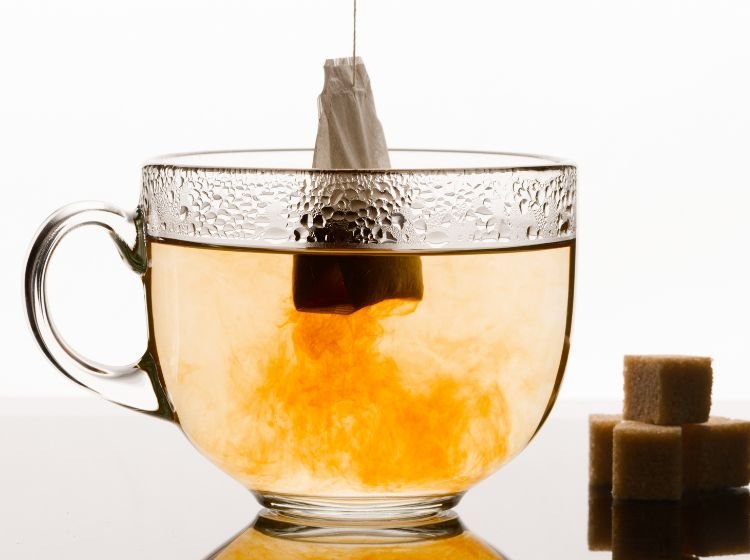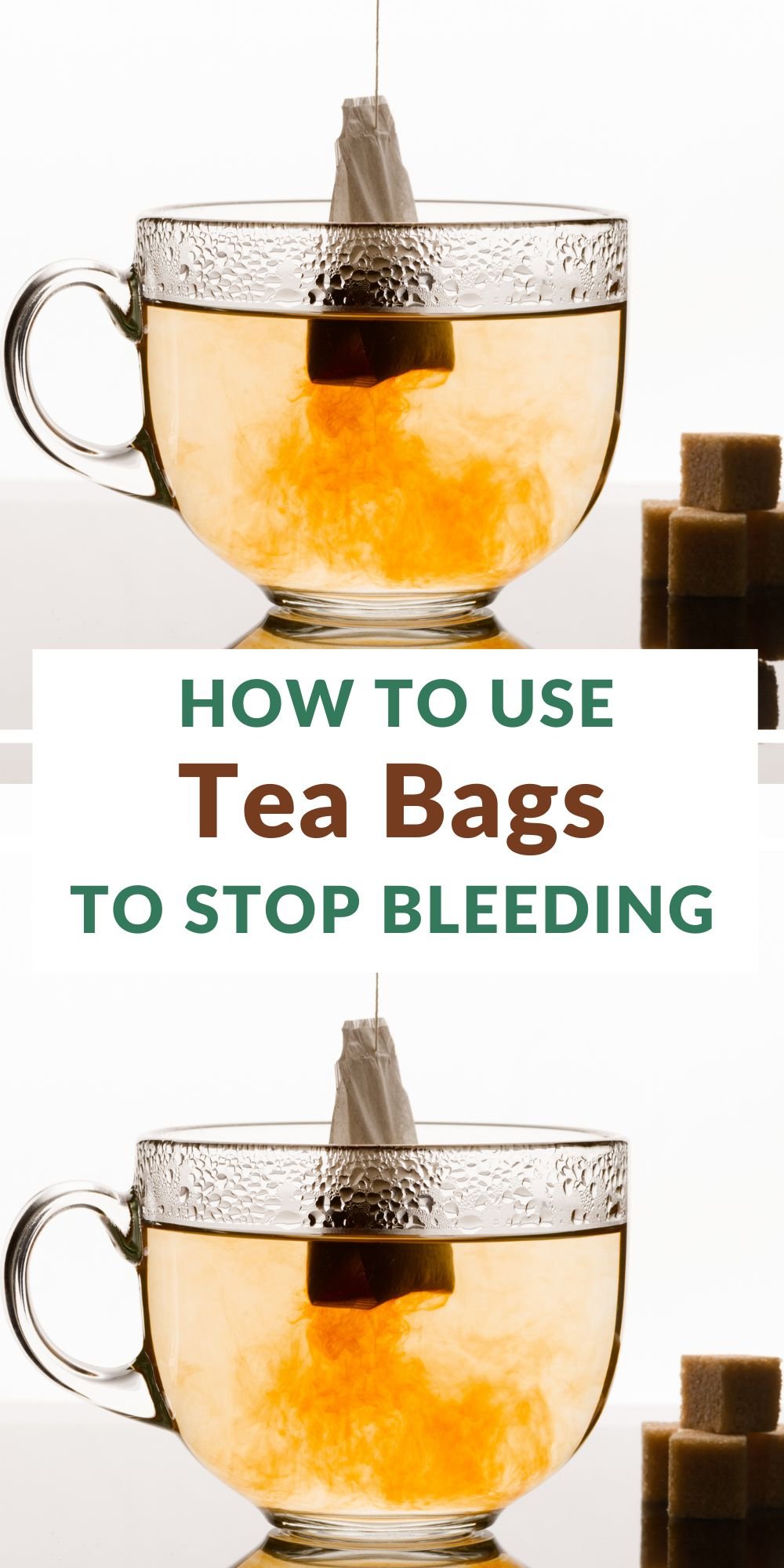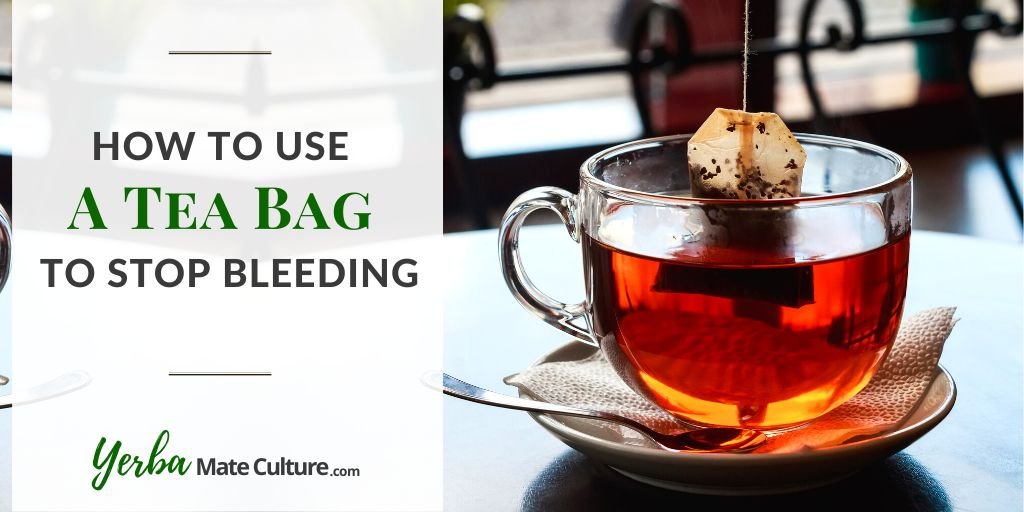People are increasingly using tea bags to holistically treat bleeding and wounds. Far from being an old wives’ tale, using tea bags to stop bleeding is a practice that’s backed by multiple studies.
So should you be adding tea bags to your medicine cabinet?
Scientific evidence suggests that tea bags can help stop bleeding, particularly in the case of minor cuts or bleeding gums. Tea contains tannins that can help constrict blood vessels and reduce bleeding and the antibacterial and anti-inflammatory properties promote healing.
Intrigued?
Everyone who loves simple natural healing hacks should be! Let’s take a closer look at why and how tea bags can help to stop bleeding.
Why Do Tea Bags Stop Bleeding?
The main effective compounds that help tea bags to stop bleeding are called tannins. Tannins help the blood to coagulate faster, cause blood vessels to constrict, and have an antiseptic effect.
1. Hemostatic Effect
The abundant tannins that naturally occur in tea are hemostatic. That means that they help the blood to coagulate faster to form a blood clot in the tooth socket.
For those who have studied the basics of wound healing, you already know that clotting stops bleeding by thickening blood. This is where knowing your teas can really count!
Tannin levels are highest in black teas. Green teas also have pretty high tannin content. While white teas do contain tannins, the levels tend to be lower.

According to a 2020 study looking at the antihemorrhagic and antibacterial effects of topical green tea, it has great potential for anti-hemorrhage applications.
In another study back in 2014, researchers looked at the effect of green tea extract on the prevention of gingival bleeding after tooth extraction. They found that the number of patients who had oozing one hour after surgery was significantly lower in the green tea group compared to the control group.
2. Astringent
Tannins aren’t just powerful because they induce coagulation. The astringent quality of tannic acid is also responsible for helping tea to stop bleeding.
When exposed to astringent compounds, the body’s tissue will actually constrict. Blood vessels count as soft tissue.
Can you see where this is going?
By causing blood vessels to constrict, tea can actually help to stop bleeding in this secondary way.
3. Antiseptic
Teas are also mildly antiseptic. While tea’s antiseptic qualities don’t necessarily help to stop bleeding, they can help to speed up healing.
That’s why someone who is trying to heal from oral surgery quickly might consider using tea to kill bacteria that could slow down the healing process.
How to Use Tea Bags After Tooth Extraction
A tea bag can be an excellent substitute for gauze following a tooth extraction.
First, let’s make it clear that no information that’s shared here should be seen as a substitute for the advice of your dentist or oral surgeon. Always clear any “alternative” practices with your care provider before trying them out!
With that said, we can move forward with how to use tea bags to soothe and protect a wound after a tooth extraction.
Here’s what to do:
- Soak a tea bag in cool water for several minutes. Black tea is best! Avoid using hot water because this can burn or irritate a sensitive open wound.
- Next, wring out the extra water from the bag.
- If the tea bag has a string, remove it from the bag without tearing the bag. Keeping a string in your mouth is never a good idea while you might be feeling groggy following surgery.
- Place the slightly damp bag directly on the extraction site.
- Gently bite down on the bag. The goal is to bite with enough pressure to keep the bag clamped in place without putting pressure on the extraction site.
- Stay upright with the bag in your mouth to avoid any choking dangers. You should also avoid falling asleep with the bag in your mouth.
How long should you keep the tea bag in your mouth following a tooth extraction?
You’ll get the best results by biting down on the bag for about 30 minutes. Always remove the bag before drinking or eating to prevent a choking hazard!
You can repeat this 30-minute session a few times per day until you feel that your wound is well on its way to healing.
Here is a short video clip that shows exactly how to do it:
How to Use Tea Bags for Wounds
Tea bags are useful for more than just wounds caused by tooth extraction. A 2013 study looking at the effect of green tea (Camellia sinensis) extract on the healing process of surgical wounds in rats proves this!
Researchers involved in this study confirmed that green tea has antioxidant and anti-inflammatory properties that can enhance the wound-healing process.
Here’s how to apply a tea bag to a wound:
- First, clean the wound area. Take time to remove any dirt or gravel that may have gotten into the wound.
- Next, place a cool, moistened tea bag directly over the bleeding wound. You can use as much pressure as you can handle when doing this.
- Use tape or gauze to keep the tea bag in place for up to 30 minutes.
There’s also an alternative method if you don’t want to apply the tea bag directly to the skin.
Simply prepare a cup of tea. Once the tea has cooled fully, dip clean gauze into the tea. You can also drizzle some tea over the gauze. Next, apply the gauze to the wound for between 20 and 50 minutes.
While leaving the tea-infused gauze on longer won’t do any harm, it can sometimes be difficult to unstick the gauze from the skin once it has been allowed to dry.
You can keep a supply of healing tea ready for action by making a large batch that you keep in the fridge. The chilled effect of tea that’s been left in the fridge can feel good on throbbing wounds.
Are Tea Bags Safe to Stop Bleeding?
Tea is generally safe and versatile enough to use on cuts, sores, ulcers, and burns. However, if you are experiencing some excessive bleeding you should contact a doctor or nurse for the best advice on how to stop the bleeding.
Many people also use tea bags for wound healing with their pets. Teas are not toxic to pets as long as they are free of caffeine.
With green and black teas being naturally caffeinated, that means you’ll need to be intentional about purchasing decaffeinated versions to treat pet wounds or sores.
What Kind of Tea Bags Are Best for Stopping Bleeding?
Not all teas are equal when it comes to clotting benefits. However, this is an interesting topic because even teas that aren’t necessarily tannin powerhouses can still provide some powerful benefits for wound healing.
Let’s start with teas that have the most tannins for clotting purposes.
According to a 2014 report from the Journal of Chemical and Pharmaceutical Research, black tea offers the highest tannin concentration. The average black tea bag has a concentration ranging from 11.76% to 15.14%.
Oolong tea is next in line with and average of 8.66%. Green tea has a concentration of 2.65%.
For those looking to get the most out of their green tea, information from Renewable Agriculture and Food Systems shows that organic green tea has higher tannin levels compared to nonorganic green tea.
Don’t let the lower tannin content of green tea discourage you from using this option for wound healing. According to a 2014 study looking at the antimicrobial possibilities of green tea, one cup can control the growth of the bacteria for up to six hours.
The same mindset goes for herbal teas. While herbal teas tend to have much lower tannin levels compared to black tea, some still contain an adequate amount of tannins.
What’s more, they are often full of antioxidant properties that can aid in wound healing. A 2017 study found that various popular herbal teas have antimicrobial activities against gram-positive and gram-negative bacteria and yeast when used alone.
In addition to buying organic tea, I also recommend choosing tea bags that do not contain plastic.
Final Thoughts on Treating Wounds With Tea Bags
Using tea bags to treat wounds is an old tradition that has later been proven to be effective in scientific studies.
So should you do it?
This holistic practice offers a great way to encourage blood clotting in wounds. It’s especially beneficial for bringing down pain and bleeding following a tooth extraction.
However, you’ll want to ask your doctor about using tea to treat a wound if you’ve been prescribed any kind of antibiotic because some herbal teas may interfere with antibiotics.
And tea bags also have more healing uses in addition to treating wounds. Another great tip is to apply tea bags for eyes as a home remedy for swollen or infected eyes.
Save on Pinterest:






